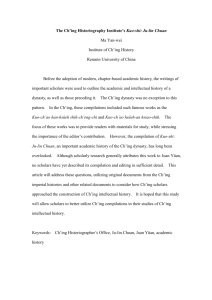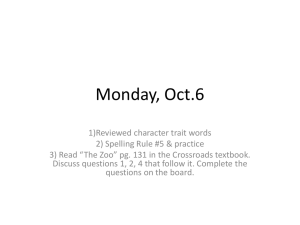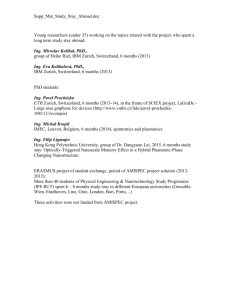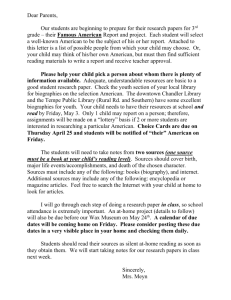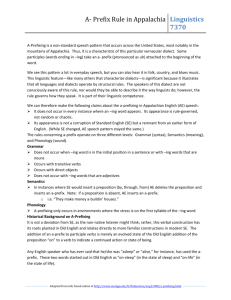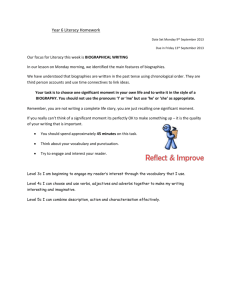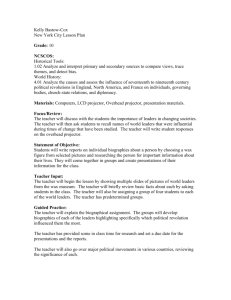Abstract
advertisement
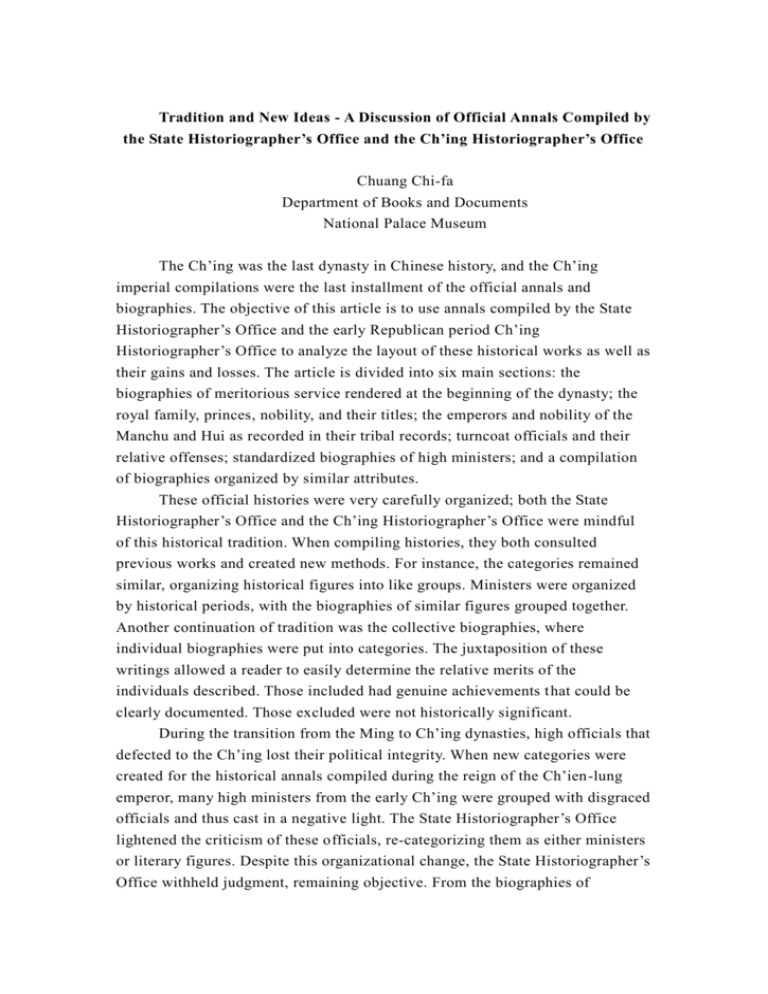
Tradition and New Ideas - A Discussion of Official Annals Compiled by the State Historiographer’s Office and the Ch’ing Historiographer’s Office Chuang Chi-fa Department of Books and Documents National Palace Museum The Ch’ing was the last dynasty in Chinese history, and the Ch’ing imperial compilations were the last installment of the official annals and biographies. The objective of this article is to use annals compiled by the State Historiographer’s Office and the early Republican period Ch’ing Historiographer’s Office to analyze the layout of these historical works as well as their gains and losses. The article is divided into six main sections: the biographies of meritorious service rendered at the beginning of the dynasty; the royal family, princes, nobility, and their titles; the emperors and nobility of the Manchu and Hui as recorded in their tribal records; turncoat officials and their relative offenses; standardized biographies of high ministers; and a compilation of biographies organized by similar attributes. These official histories were very carefully organized; both the State Historiographer’s Office and the Ch’ing Historiographer’s Office were mindful of this historical tradition. When compiling histories, they both consulted previous works and created new methods. For instance, the categories remained similar, organizing historical figures into like groups. Ministers were organized by historical periods, with the biographies of similar figures grouped together. Another continuation of tradition was the collective biographies, where individual biographies were put into categories. The juxtaposition of these writings allowed a reader to easily determine the relative merits of the individuals described. Those included had genuine achievements that could be clearly documented. Those excluded were not historically significant. During the transition from the Ming to Ch’ing dynasties, high officials that defected to the Ch’ing lost their political integrity. When new categories were created for the historical annals compiled during the reign of the Ch’ien-lung emperor, many high ministers from the early Ch’ing were grouped with disgraced officials and thus cast in a negative light. The State Historiographer’s Office lightened the criticism of these officials, re-categorizing them as either ministers or literary figures. Despite this organizational change, the State Historiographer’s Office withheld judgment, remaining objective. From the biographies of Confucian scholars compiled by the State Historiographer’s Office and the Ch’ing Historiographer’s Office, it is possible to understand the approach both institutions took towards the organization of their works. A discussion of this organizational method can help scholars to better understand the charac teristics of Ch’ing history. Keywords: State Historiographer’s Office, Ch’ing Historiographer’s Office, Official Histories, Er-ch’en Chuan, Ju-lin Chuan
